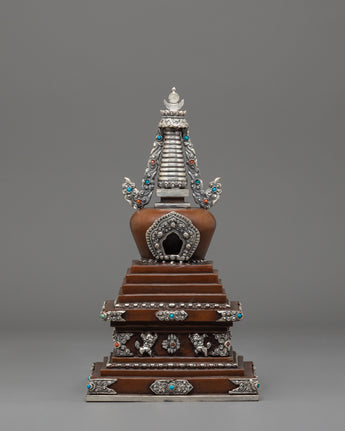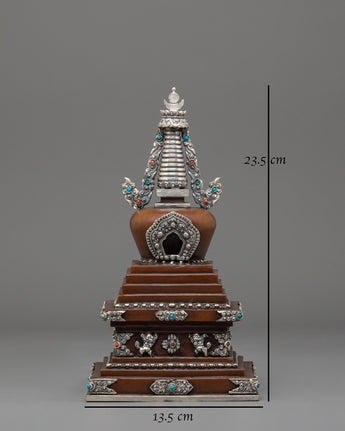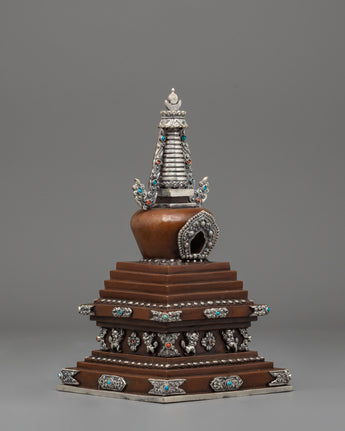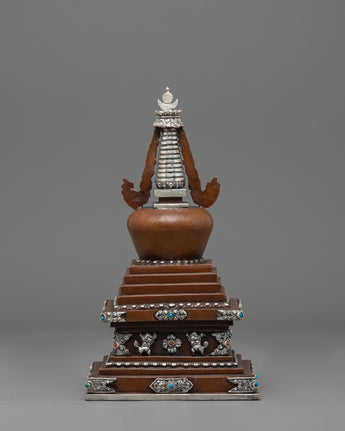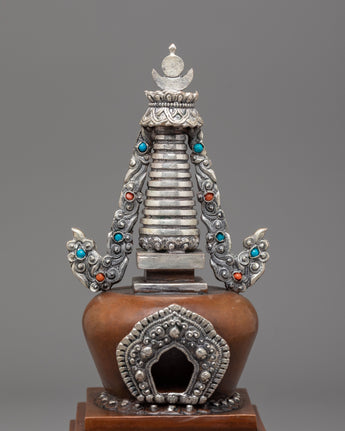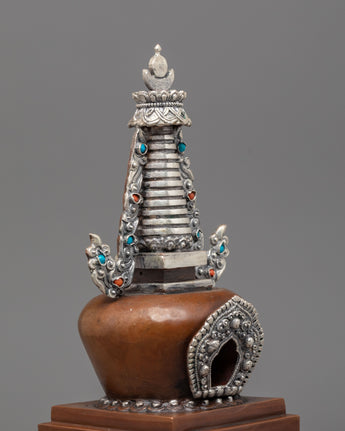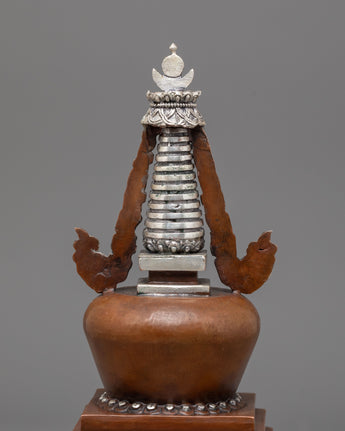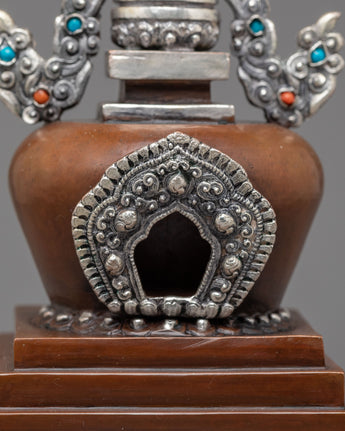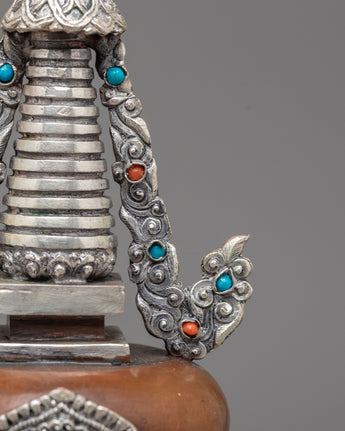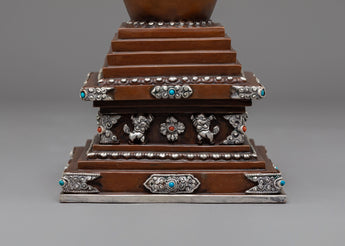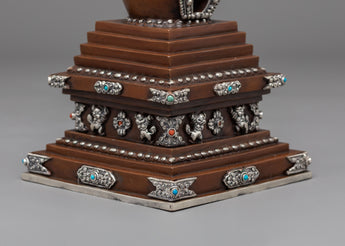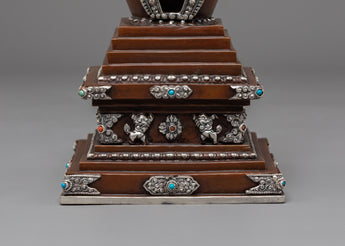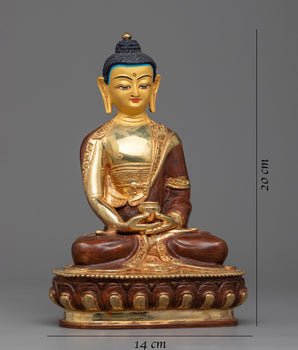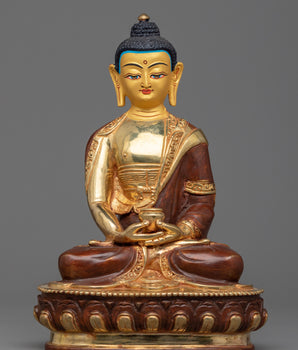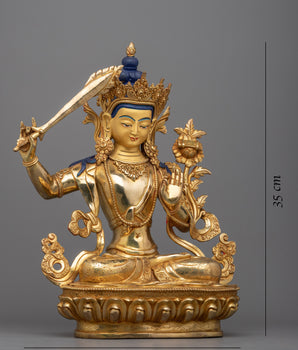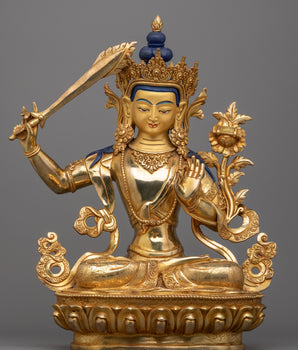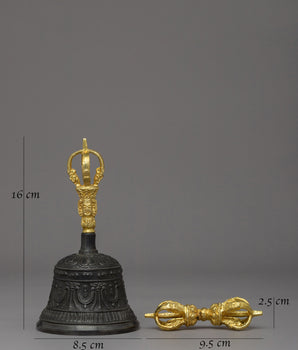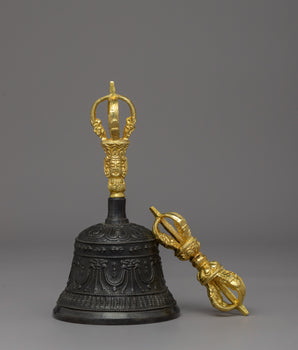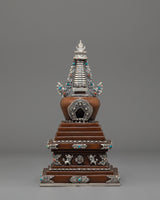
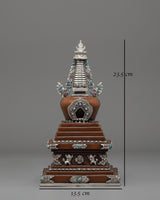
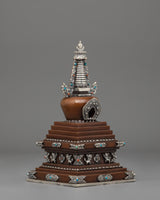
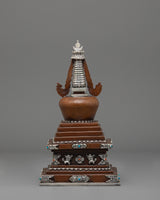
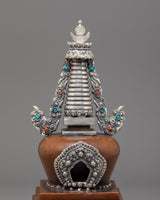
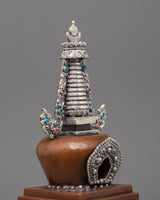
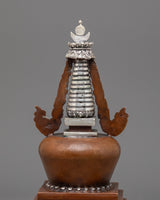
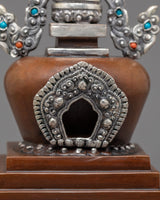
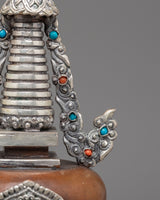
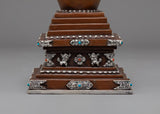
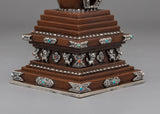
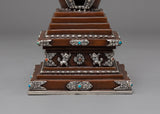
Oxidized Copper Stupa | Buddhist Ritual Altar Offering

100% AUTHENTIC

HANDMADE

FREE SHIPPING
Oxidized Copper Stupa for Ceremonies | Buddhist Ritual Artifact with Coral and Turquoise Stone Inlays
--------------------------------------------------
Size: 23.5cm(Height) x 13.5cm(Width)
Weight: 0.62kg
Materials: Oxidized Copper Body, Silver Plated, Artificial Stones: Coral, Turquoise
--------------------------------------------------
About Our Ritual Item :
This Oxidized Copper Stupa for Ceremonies is a sacred emblem of enlightenment and spiritual rebirth, meticulously made by talented Himalayan artisans. This ceremonial stupa (or Chorten), made of oxidized copper with silver-plated embellishments, symbolizes the Buddha's enlightened mind and the way to ultimate nirvana. Stupas, often placed atop Buddhist altars, are potent offerings that radiate peace, harmony, and positive energy throughout their surroundings.
This stupa comes to life through exquisite craftsmanship, including precise carving and religious adornment. The base is tiered in ascending layers to represent the stages of enlightenment, while the body is adorned with auspicious motifs and silver filigree. The jewelry is embellished with imitation turquoise and coral stones, reflecting a balance of spiritual and earthly aspects. The upper half is crowned with a moon-and-sun emblem that represents Buddhist philosophy's unity and completeness. Every part of the design is of profound importance, serving as a meditative reminder of wisdom, purity, and compassion.
This Tibetan Oxidized Copper Stupa is suitable for Buddhist ceremonies, altars, and meditation areas. Whether used in everyday rituals or displayed as a sacred adornment, it promotes blessings, mindfulness, and inner peace. This stupa is a valuable item for practitioners and collectors alike, embodying the Buddha's spiritual teachings and the eternal elegance of Himalayan metal art.
Introduction To Stupa :
Before Buddhism, great teachers were buried in mounds. Some were cremated, but sometimes they were buried in a seated, meditative position. The mound of earth covered them up. Thus, the domed shape of the stupa came to represent a person seated in meditation, much as the Buddha was when he achieved Enlightenment and knowledge of the Four Noble Truths. The base of the stupa represents his crossed legs as he sat in a meditative pose. The middle portion is the Buddha’s body, and the top of the mound, where a pole rises from the apex surrounded by a small fence, represents his head. Before images of the human Buddha were created, reliefs often depicted practitioners demonstrating devotion to a stupa.
How to Set Up Your Own Buddhist Shrine?
• Find a clean, quiet, and uncluttered spot
• Set up an altar table, and cover it with an altar cloth that calls to you
• Place your sacred item at the center
• If you want a more elaborate altar, you can put a Stupa as well

